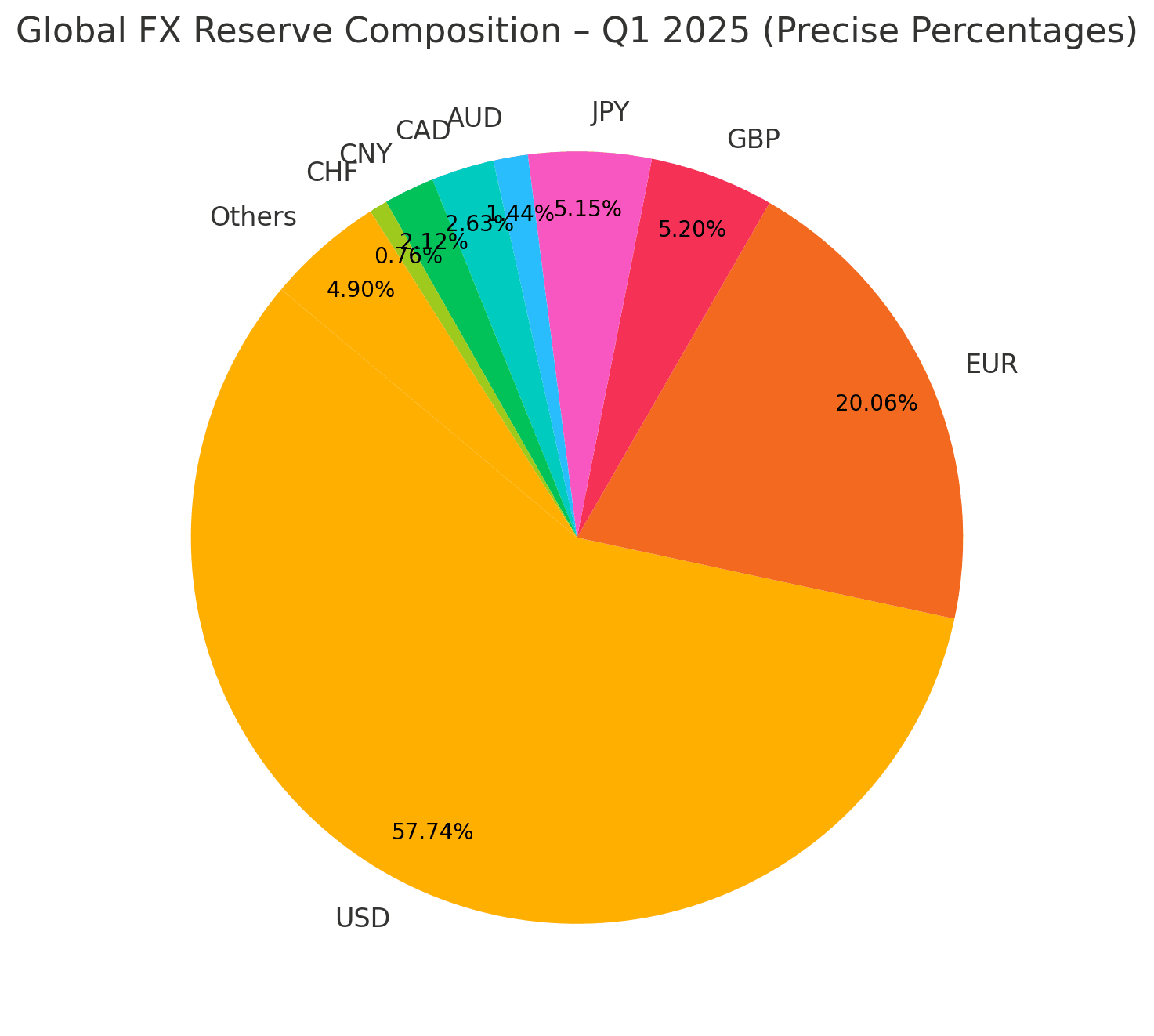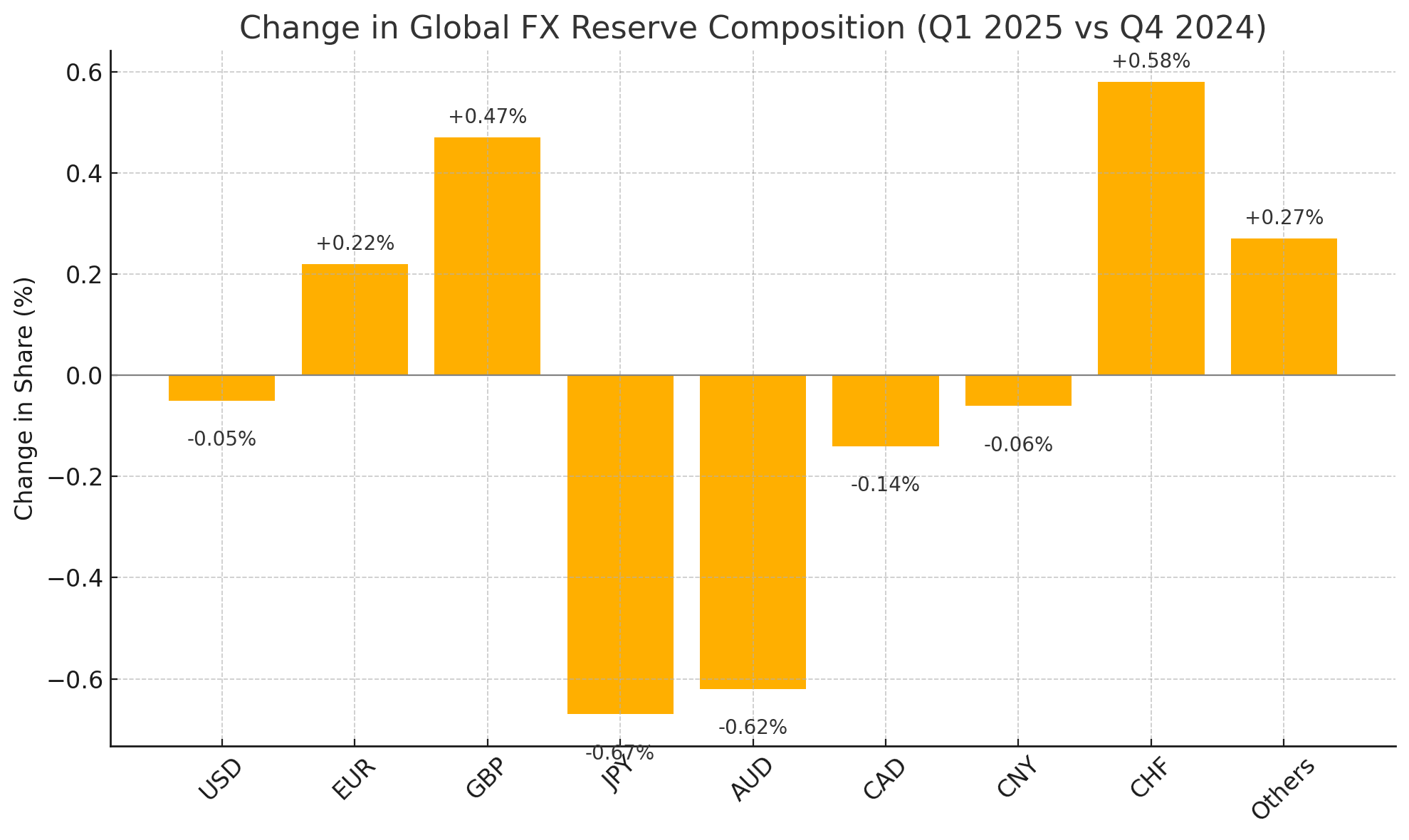
Image © Adobe Images
... in central bank reserve holdings.
New data from the IMF shows central banks have bulked up their holdings of the British Pound in 2025.
Global central banks now hold more pounds in reserve as they do Japanese yen, making the Pound the third highest holding after the Dollar and Euro, according to the IMF's latest Currency Composition of Official Foreign Exchange Reserves (COFER) data.
"The GBP share leapt to a 50 year high of 5.2% in Q125 from 4.7% in Q424," says a note from the Crédit Agricole FX research desk following the release of the IMF data.
Central bank currency holdings matter because they offer insights into the relative strength, trust, and international utility of a currency.
The rise in Pound Sterling holdings follows two years of outperformance by the currency in global FX markets.
"For all the apparent fiscal concerns, GBP's allocation at 5.2% is the highest since the 1970s," says Dominic Bunning, FX analyst at Nomura.
The share of reserves held in USD was steady at 57.73% (from 57.78%), while the EUR's share rose modestly to 20.06% from 19.84% on valuation effects.
The report shows demand for the Swiss Franc more than quadrupled, increasing to 0.76% in Q125 from 0.18% in Q424, and thus hit its highest levels since 1992.
"What really stands out is some very sizeable selling of JPY and AUD in Q1, and some very sizeable buying of CHF," says Elsa Lignos, Global Head of FX Strategy at RBC Capital Markets. "It is very rare for reserve managers to be such big sellers of JPY (and such big buyers of CHF)."
The Australian Dollar's share, meanwhile, fell to 1.44% in Q125 from 2.06% in Q424, making for its lowest level since the IMF started reporting in 2012. The slimmer AUD holdings reflects a period of underperformance by the currency in the preceeding months.
"Many in FX markets have been wondering why AUD has struggled to keep pace with its G10 peers during the recent USD sell-off – a lack of reserve manager demand may provide an explanation," says Bunning.

Crédit Agricole say the moves reported in the latest COFER data seem excessive by historic standards and stand in contrast with the more muted fluctuations of the CHF, AUD and GBP at the start of year:
"They seem to point to significant increases in the ‘real’ central bank buying of the CHF and GBP and selling of the AUD."

